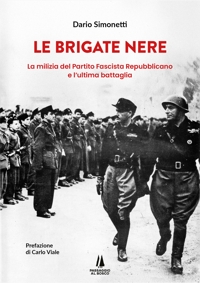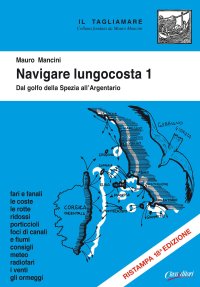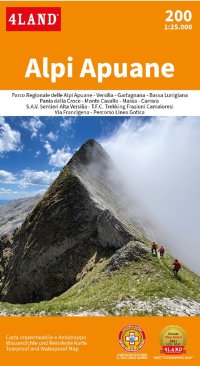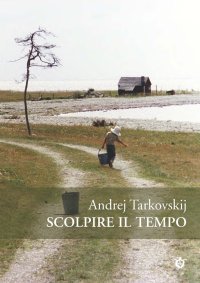Felice Palma. Massa 1583-1625. Collezione / Collection.
Texts by Andrei Cristina, Ciarlo Nicola, Federici Fabrizio, Claudio Casini and Sara Ragni.
Italian and English Text.
Pontedera, 2024; bound in a case, pp. 289, b/w and col. ill., b/w and col. plates, cm 24,5x34.
(L'Oro Bianco. Straordinari Dimenticati. The White Gold Forgotten Masters).
cover price: € 160.00
|
Books included in the offer:
Felice Palma. Massa 1583-1625. Collezione / Collection.
Texts by Andrei Cristina, Ciarlo Nicola, Federici Fabrizio, Claudio Casini and Sara Ragni.
Italian and English Text.
Pontedera, 2024; bound in a case, pp. 289, b/w and col. ill., b/w and col. plates, cm 24,5x34.
(L'Oro Bianco. Straordinari Dimenticati. The White Gold Forgotten Masters).
FREE (cover price: € 160.00)
Le botteghe del marmo
Italian and English Text.
Ospedaletto, 1992; bound, pp. 153, 10 b/w ill., 60 col. ill., cm 24x29.
(Immagine).
FREE (cover price: € 34.49)
Museo Stefano Bardini. I Bronzetti e gli Oggetti d'Uso in Bronzo
Edited by Nesi A.
Firenze, 2009; paperback, pp. 191, 102 b/w ill., 7 col. ill., cm 17x24,5.
(Museo Stefano Bardini).
FREE (cover price: € 30.00)
Bronzetti e Rilievi dal XV al XVIII Secolo
Bologna, 2015; 2 vols., bound in a case, pp. 729, ill., col. plates, cm 21,5x30,5.
FREE (cover price: € 90.00)
Rotella. Amor al cine
Restany Pierre - Fiz Alberto
Silvia
Edited by Sanfo V.
Italian, English and Spanish Text.
Cologno Monzese, 2003; paperback, pp. 128, ill., cm 23,5x29.
ISBN: 88-88250-11-5 - EAN13: 9788888250113
Subject: Essays (Art or Architecture),Painting
Period: 1800-1960 (XIX-XX) Modern Period,1960- Contemporary Period
Languages: 


Weight: 1.02 kg
When Rotella lived in Rome, in the early 1950s, the debate about informal art was at its most heated. Giuseppe Capogrossi and Alberto Burri were the two major poles of attraction-the former for his investigation of the primary element and the latter for his research into matter.
Well, Rotella was certainly closer to Burri than to Capogrossi, but he was clearly aware that the path he would follow was quite different.
After delving into all sorts of pictorial experiences, the artist from Calabria hit a moment of crisis and came through it only when he discovered décollage. Rotella described the moment himself: "I went through a crisis, after which, at the height of this period (at that time my atelier was near Piazza del Popolo, in Rome), I was struck by the city walls lined with ripped posters. I was literally spellbound, and even more so because at that time I was convinced that painting was finished, that something new had to be unearthed, something alive and modern. So in the evenings I began to tear the posters, ripping them down from the walls, and take them back to my studio, creating compositions and leaving them exactly the way they were, exactly the way I saw them. That is how the décollage came to be."1 This was 1953 and the images were exhibited for the first time in February 1954, thanks to a critic and philologist of great intuition, Emilio Villa, who died recently. When he introduced them in Rome, on the Tiber, where a floating gallery had been opened, he wrote without trepidation: "Whoever misses seeing the launching of this unique experiment on the currents of such an historic river, will certainly lose an important occasion." These brief historical notes appear fundamental to locating the figure of Rotella, especially now that China is preparing to celebrate him with a series of exhibitions of enormous prestige. Well, these shows are yet another opportunity for substantiating the extraordinary topicality of a pursuit that continues to offer surprises. Affiches lacérées, or décollages, or torn posters, or however one wishes to define them, are endowed with a specificity that renders them different to the other explosive gestures of the twentieth century: they will not grow old.
Rotella, in fact, enjoys the merit of projecting his mark on the street, burrowing into reality in order to gather the existent. As the critic Cesare Vivaldi had already sensed, way back in 1957, Rotella went far beyond dadaism, past Schwitters, to "reach the collage as if it were a promised land, already pinpointed in his thought and imagination, but not yet brought to fruition."2 This allows him to operate non-stop in top gear, making futurist dreams come true, with their desire to impress dynamic form on space. Moreover, the tear does not exist as such, but depicts the element that triggers the start of a reaction from reality, which in this way will modify and transform. Rotella manipulates the universe's energy to create a virtuous circle, overflowing with consequences at physical and perceptual level. In fact, after he has intervened, nothing seems the way it did before, and...
Simonetti Dario € 23.75
€ 25.00 -5 %
Mauro Mancini € 30.40
€ 32.00 -5 %
















